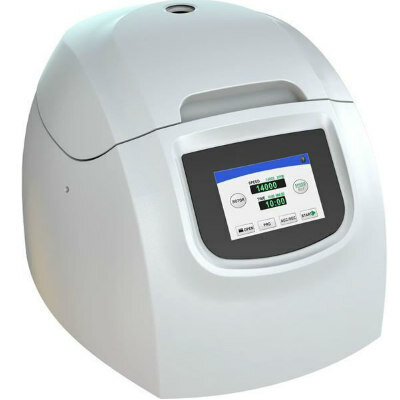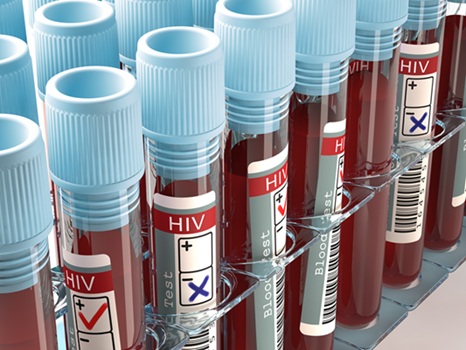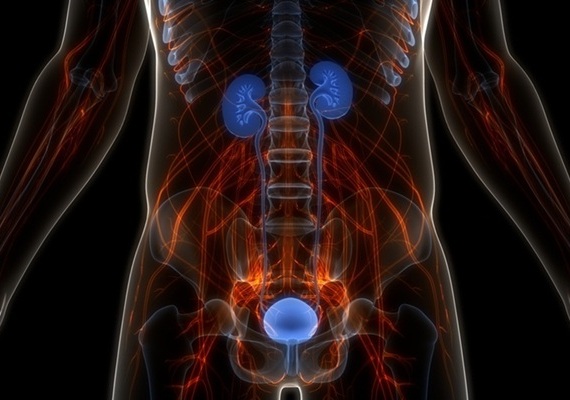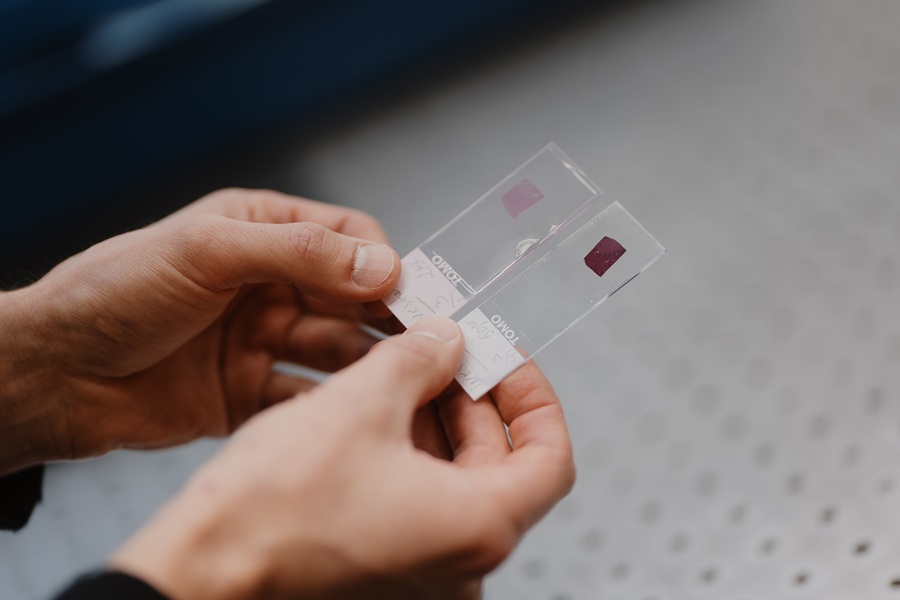Novel Method Detects Bacterial Infection in Preterm Infants
|
By LabMedica International staff writers Posted on 12 Apr 2016 |
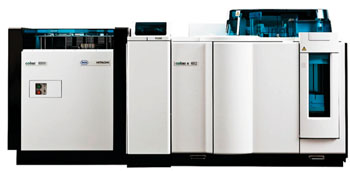
Image: The cobas 8000 modular analyzer system (Photo courtesy of Roche Diagnostics).
A new criterion has been proposed for diagnosis of bacterial infection in preterm infants and using this method could lead to early diagnosis and treatment for bacterial infection and improve the prognosis for preterm infants.
Infants born prematurely do not have fully developed immune functions and compared to full-term infants, and if preterm infants suffer a bacterial infection there is a higher chance of fatality or negative impact on future growth and development.
Scientists at Kobe University (Japan) examined 1,267 serums from 283 newborns at the neonatal intensive care unit in Kobe University Hospital between June and December 2014. The enrolled newborns were divided into three infant groups as follows: 37 preterm of less than 34 weeks’ gestational age (GA); 61 late preterm of 34 to 36 weeks’ GA, and 185 term infants equal to or greater than 37 weeks’ GA.
Serum procalcitonin (PCT), was used as a marker used for early detection of bacterial infection in adults and children. Serum PCT measurement was performed using 30 μL of serum, the serum PCT concentration was measured by electrochemical luminescence immunoassay using the COBAS 8000e analyzer (Roche Diagnostics, Basel, Switzerland). The results demonstrated that PCT levels in full-term infants rose temporarily one day after birth, returning to the normal level for adults within five days (0.1ng/mL). However, for preterm infants it took nine days after birth for PCT to return to normal levels. Based on these results, the group plotted two reference curves: 50th percentile and 90th percentile values. When they superimposed three cases of preterm infants with bacterial infection on these curves, it clearly showed that in all three cases the serum PCT concentrations were higher than the 95th percentile values.
The authors concluded that that the physiological feature in preterm infants was significantly different from that in late preterm infants, even in those less than 37 weeks’ gestational age. To detect late-onset bacterial infection and sepsis, an age-specific percentile-based reference curve may be useful in preterm infants. Ichiro Morioka, MD, a professor of pediatrics and senior author of the study said, “We could also potentially use this method to limit unnecessary use of antibacterial agents. Our next step is to verify the precision of diagnoses based on these reference curves.” The study was published on April 1, 2016, in the journal Scientific Reports.
Related Links:
Kobe University
Roche Diagnostics
Infants born prematurely do not have fully developed immune functions and compared to full-term infants, and if preterm infants suffer a bacterial infection there is a higher chance of fatality or negative impact on future growth and development.
Scientists at Kobe University (Japan) examined 1,267 serums from 283 newborns at the neonatal intensive care unit in Kobe University Hospital between June and December 2014. The enrolled newborns were divided into three infant groups as follows: 37 preterm of less than 34 weeks’ gestational age (GA); 61 late preterm of 34 to 36 weeks’ GA, and 185 term infants equal to or greater than 37 weeks’ GA.
Serum procalcitonin (PCT), was used as a marker used for early detection of bacterial infection in adults and children. Serum PCT measurement was performed using 30 μL of serum, the serum PCT concentration was measured by electrochemical luminescence immunoassay using the COBAS 8000e analyzer (Roche Diagnostics, Basel, Switzerland). The results demonstrated that PCT levels in full-term infants rose temporarily one day after birth, returning to the normal level for adults within five days (0.1ng/mL). However, for preterm infants it took nine days after birth for PCT to return to normal levels. Based on these results, the group plotted two reference curves: 50th percentile and 90th percentile values. When they superimposed three cases of preterm infants with bacterial infection on these curves, it clearly showed that in all three cases the serum PCT concentrations were higher than the 95th percentile values.
The authors concluded that that the physiological feature in preterm infants was significantly different from that in late preterm infants, even in those less than 37 weeks’ gestational age. To detect late-onset bacterial infection and sepsis, an age-specific percentile-based reference curve may be useful in preterm infants. Ichiro Morioka, MD, a professor of pediatrics and senior author of the study said, “We could also potentially use this method to limit unnecessary use of antibacterial agents. Our next step is to verify the precision of diagnoses based on these reference curves.” The study was published on April 1, 2016, in the journal Scientific Reports.
Related Links:
Kobe University
Roche Diagnostics
Latest Clinical Chem. News
- Carbon Nanotubes Help Build Highly Accurate Sensors for Continuous Health Monitoring
- Paper-Based Device Boosts HIV Test Accuracy from Dried Blood Samples
- AI-Powered Raman Spectroscopy Method Enables Rapid Drug Detection in Blood
- Novel LC-MS/MS Assay Detects Low Creatinine in Sweat and Saliva
- Biosensing Technology Breakthrough Paves Way for New Methods of Early Disease Detection
- New Saliva Test Rapidly Identifies Paracetamol Overdose
- POC Saliva Testing Device Predicts Heart Failure in 15 Minutes

- Screening Tool Detects Multiple Health Conditions from Single Blood Drop
- Integrated Chemistry and Immunoassay Analyzer with Extensive Assay Menu Offers Flexibility, Scalability and Data Commutability
- Rapid Drug Test to Improve Treatment for Patients Presenting to Hospital
- AI Model Detects Cancer at Lightning Speed through Sugar Analyses
- First-Ever Blood-Powered Chip Offers Real-Time Health Monitoring
- New ADLM Guidance Provides Expert Recommendations on Clinical Testing For Respiratory Viral Infections
- 3D Printed Point-Of-Care Mass Spectrometer Outperforms State-Of-The-Art Models
- POC Biomedical Test Spins Water Droplet Using Sound Waves for Cancer Detection
- Highly Reliable Cell-Based Assay Enables Accurate Diagnosis of Endocrine Diseases
Channels
Molecular Diagnostics
view channel
RNA-Based Blood Test Detects Preeclampsia Risk Months Before Symptoms
Preeclampsia remains a major cause of maternal morbidity and mortality, as well as preterm births. Despite current guidelines that aim to identify pregnant women at increased risk of preeclampsia using... Read more
First Of Its Kind Test Uses microRNAs to Predict Toxicity from Cancer Therapy
Many men with early-stage prostate cancer receive stereotactic body radiotherapy (SBRT), a highly precise form of radiation treatment that is completed in just five sessions. Compared to traditional radiation,... Read moreNovel Cell-Based Assay Provides Sensitive and Specific Autoantibody Detection in Demyelination
Anti-myelin-associated glycoprotein (MAG) antibodies serve as markers for an autoimmune demyelinating disorder that affects the peripheral nervous system, leading to sensory impairment. Anti-MAG-IgM antibodies... Read moreHematology
view channel
New Scoring System Predicts Risk of Developing Cancer from Common Blood Disorder
Clonal cytopenia of undetermined significance (CCUS) is a blood disorder commonly found in older adults, characterized by mutations in blood cells and a low blood count, but without any obvious cause or... Read more
Non-Invasive Prenatal Test for Fetal RhD Status Demonstrates 100% Accuracy
In the United States, approximately 15% of pregnant individuals are RhD-negative. However, in about 40% of these cases, the fetus is also RhD-negative, making the administration of RhoGAM unnecessary.... Read moreImmunology
view channel
Stem Cell Test Predicts Treatment Outcome for Patients with Platinum-Resistant Ovarian Cancer
Epithelial ovarian cancer frequently responds to chemotherapy initially, but eventually, the tumor develops resistance to the therapy, leading to regrowth. This resistance is partially due to the activation... Read more
Machine Learning-Enabled Blood Test Predicts Immunotherapy Response in Lymphoma Patients
Chimeric antigen receptor (CAR) T-cell therapy has emerged as one of the most promising recent developments in the treatment of blood cancers. However, over half of non-Hodgkin lymphoma (NHL) patients... Read moreMicrobiology
view channel
Handheld Device Deliver Low-Cost TB Results in Less Than One Hour
Tuberculosis (TB) remains the deadliest infectious disease globally, affecting an estimated 10 million people annually. In 2021, about 4.2 million TB cases went undiagnosed or unreported, mainly due to... Read more
New AI-Based Method Improves Diagnosis of Drug-Resistant Infections
Drug-resistant infections, particularly those caused by deadly bacteria like tuberculosis and staphylococcus, are rapidly emerging as a global health emergency. These infections are more difficult to treat,... Read more
Breakthrough Diagnostic Technology Identifies Bacterial Infections with Almost 100% Accuracy within Three Hours
Rapid and precise identification of pathogenic microbes in patient samples is essential for the effective treatment of acute infectious diseases, such as sepsis. The fluorescence in situ hybridization... Read morePathology
view channel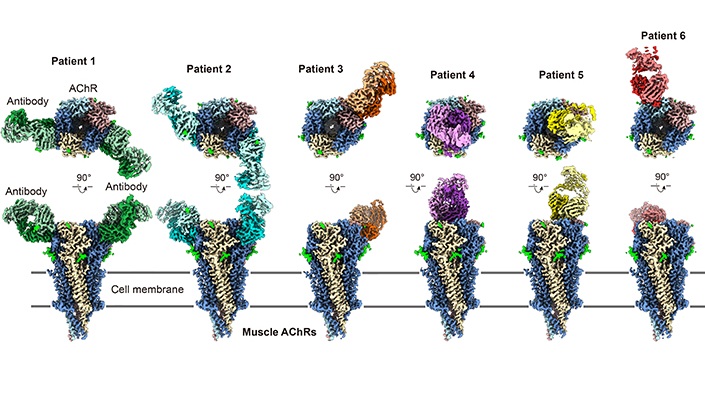
Advanced Imaging Reveals Mechanisms Causing Autoimmune Disease
Myasthenia gravis, an autoimmune disease, leads to muscle weakness that can affect a range of muscles, including those needed for basic actions like blinking, smiling, or moving. Researchers have long... Read more
AI Model Effectively Predicts Patient Outcomes in Common Lung Cancer Type
Lung adenocarcinoma, the most common form of non-small cell lung cancer (NSCLC), typically adopts one of six distinct growth patterns, often combining multiple patterns within a single tumor.... Read moreTechnology
view channel
Pain-On-A-Chip Microfluidic Device Determines Types of Chronic Pain from Blood Samples
Chronic pain is a widespread condition that remains difficult to manage, and existing clinical methods for its treatment rely largely on self-reporting, which can be subjective and especially problematic... Read more
Innovative, Label-Free Ratiometric Fluorosensor Enables More Sensitive Viral RNA Detection
Viruses present a major global health risk, as demonstrated by recent pandemics, making early detection and identification essential for preventing new outbreaks. While traditional detection methods are... Read moreIndustry
view channel
Cepheid and Oxford Nanopore Technologies Partner on Advancing Automated Sequencing-Based Solutions
Cepheid (Sunnyvale, CA, USA), a leading molecular diagnostics company, and Oxford Nanopore Technologies (Oxford, UK), the company behind a new generation of sequencing-based molecular analysis technologies,... Read more
Grifols and Tecan’s IBL Collaborate on Advanced Biomarker Panels
Grifols (Barcelona, Spain), one of the world’s leading producers of plasma-derived medicines and innovative diagnostic solutions, is expanding its offer in clinical diagnostics through a strategic partnership... Read more







